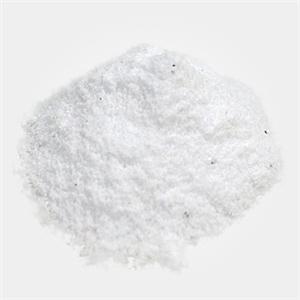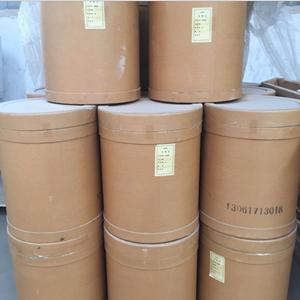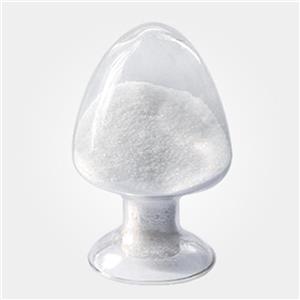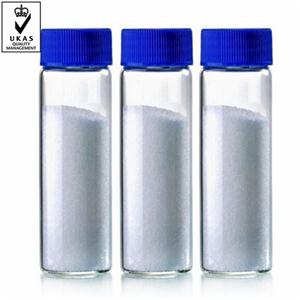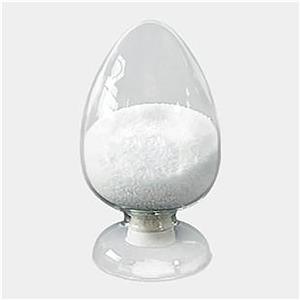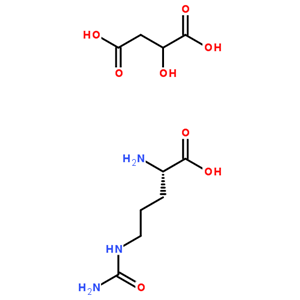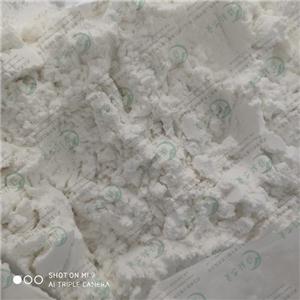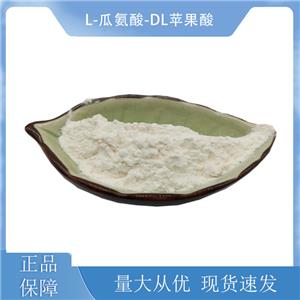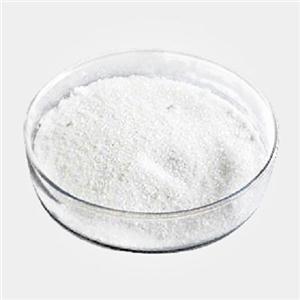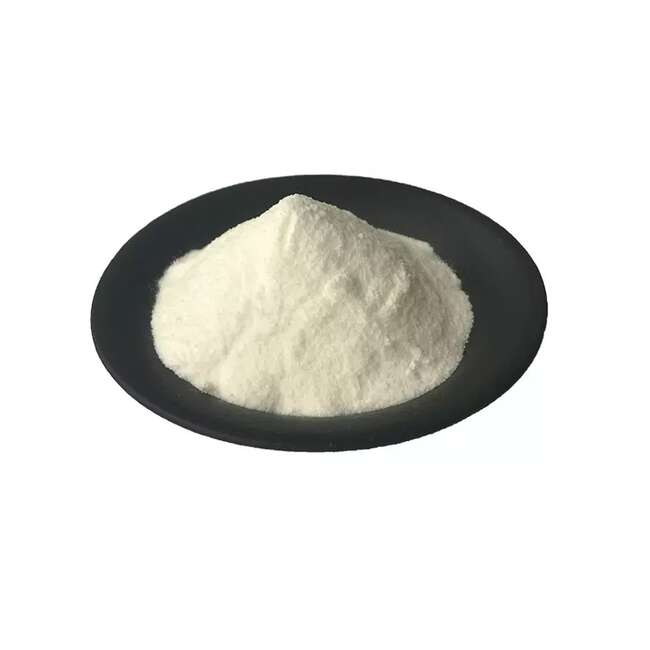Citrulline malate
CAS: 54940-97-5
Synonyms: Citrulline, L-Citrulline Malate, L-Citrulline DL-Malate, L-Citrulline L-Malate
Manufacturer
Shanghai Lvshanghai Biotechnology Co., Ltd
Brand Name
Nutragreen
CAS Number
372-75-8
Molecular Formula
C6H13N3O3
Molecular Weight
175.19
Assay
98.5-101.0%
Appearance
White crystals or crystalline powder
Odor
Characteristic
Loss on drying
0.2% Max.
Dosage
6 grams a day
Specification
98%min
Main benefits
Increase nitric oxide, Reduces Lactic Acid and Ammonia, increase energy
Applied industry
Sports nutrition,fitness, bodybuilding
What is Citrulline Malate?
Citrulline Malate is a compound consisting of L-Citrulline, a nonessential amino acid that is primarily found in melons, and malate, an apple derivative. Malate, a tricarboxycylic acid cycle (TCA) intermediate – the TCA cycle is a major producer of aerobic energy within the mitochondria.
Citrulline in the form of citrulline malate is sold as a performance-enhancing athletic dietary supplement, which was shown to reduce muscle fatigue in a preliminary clinical trial. The rind of watermelon (Citrullus lanatus) is a good natural source of citrulline. Many sports nutrition specialists believe that Citrulline Malate has the potential to be the next big thing in helping to redefine human athletic performance.
Citrulline is a non-essential amino acid that is an important intermediate in the urea cycle, functioning along with Arginine and Ornithine to rid the body of ammonia, a byproduct of protein metabolism. ; Because Citrulline is a precursor of Arginine, it provides a readily available source material for Arginine production, which in turn, can be used for the production of Nitric Oxide (NO). ; NO plays a fundamental role in vascular function and blood flow. ; Citrulline therefore, not only supports detoxification pathways, but also supports NO production and a healthy cardiovascular system.
L-Citrulline is one of the three amino acids in the Urea cycle alongside L-Arginine and L-Ornithine; it turns into L-Arginine after absorption and being sent to the kidneys, so it is actually a better method of getting supplemental L-Arginine into the blood rather than L-Arginine itself
Relationship between L-Citrulline and Arginine
L-Arginine and L-citrulline are two amino acids bundled into a single powerful supplement. L-Arginine is an important factor in muscle metabolism and is a precursor for nitric oxide, which promotes increased circulation by relaxing blood vessels. L-Citrulline helps the body rid itself of ammonia, a by-product of exercise. This clearing enables the body to recover after a workout.
Citrulline is known as a non-protein amino acid. That is, it is not a necessary amino acid to act as a building block for protein. First found in the rinds of watermelons, citrulline can be derived internally via two reactions; as part of the urea cycle or via the nitric oxide synthase reaction shown above. As stated before, new research has begun looking at citrulline as a way of providing endogenous arginine due to its ability to escape being metabolised by our digestive system.
Citrulline can be converted to arginine with the help of two enzymes; argininosuccinate synthetase (ASS) and argininosuccinate lyase (ASL), however the reaction can be quite energetic. In other word, it requires ATP, our body’s fuel in order to complete this reaction. Now the story gets complicated. If we require energy to convert citrulline to arginine, why then would we bother switching to oral supplementation of citrulline as a way of providing nitric oxide and with prolonged energy and endurance? The answer to this question may lie in the fact that while both amino acids have its drawbacks in their capability to produce nitric oxide, perhaps citrulline fares slightly better.
Arginine is an amino acid that is considered conditionally essential. That is, depending on your health and development status, arginine may or may not need to be supplemented through outside sources.
There is no doubt that both arginine and citrulline are great amino acids in their own right with several positives. While there is quite a lot of evidence in favour of oral supplementation of citrulline over that of arginine, research is still in its early days and better conclusions are still a long way off. However, with all the benefits mentioned above as well as its rising potential as an anabolic agent capable of promoting muscle protein synthesis, citrulline is gathering more and more interest in the exercise, bodybuilding, athletic and sports science community.
How does citrulline malate work?
As an intermediate in the urea cycle, Citrulline aids in the removal of endotoxins such as lactic acid and ammonia, which can impair exercise performance. These endotoxins are produced through intense physical activity, protein metabolism, and catabolic states.
Research also suggests that citrulline is possibly more effective than arginine for enhancing plasma arginine levels. This is because of Citrulline’s effects on endogenous arginine synthesis – meaning that Citrulline Malate may be a superior alternative to arginine for regulating nitric oxide production, growth hormone release, insulin and creatine production. Citrulline Malate has also been shown to (at doses as low as 6 grams a day) to significantly reduce muscle fatigue, increased ATP production by around 30%, and caused a dramatic increase in phosphocreatine levels after exercise.
Benefits of taking citrulline malate supplements
L-Citrulline is a natural amino acid that supports sports performance and good health, while at the same time helping the liver detoxify. L-Citrulline helps the body rid itself of ammonia, a by-product of intense exercise. This clearing enables the body to recover after a workout, and it frees ATP energy for enhanced uses such as respiration and signal transduction.
1. Increased Nitric Oxide Production
Of specific interest to all of us athletes in the trenches is it's role of regulating Nitric Oxide (NO). I mention this first only because the sport nutrition industry has been recently flooded with NO potentiating products comprised of L-Arginine and / or other Arginine salts, which until this day have been the most cost effective manner in improving NO function. It is well known in the scientific community that L-Arginine is a substrate for production of Nitric Oxide2, as well as catalyst for other metabolic reactions including its effects on insulin, various hormones and creatine synthesis.3
(The NO synthase (NOS) enzymes convert Arginine into Citrulline and NO)
So what is NO and what can it do for you? Nitric oxide is the cell-signaling molecule that has a part in regulating blood flow, oxygen delivery, glucose uptake, muscle firepower, and muscle growth. Obviously the ability to control these physiological effects can be of tremendous value to athletes.
Unfortunately I think many of the companies currently marketing NO products are missing the boat by not including Citrulline Malate in the current crop of NO supplements. You see, many of Citrulline's functions stem primarily from its ability to increase plasma levels of Arginine endogenously (in the human body).4 And what is really so exciting about Citrulline is that it seems to increase plasma Arginine levels better than taking the amino acid Arginine itself.5 You read correctly!
Research has shown that supplementation of Citrulline raises Arginine levels more effectively than taking the same dose of straight Arginine. Keep in mind that Citrulline Malate's NO enhancing properties are just one of the unique benefits this nutrient offers to athletes. And if the enhanced pumps and improved nutrient delivery properties are the reason you are using Arginine based NO products, you need to pay attention to Citrulline Malate.
2. Reduces Lactic Acid and Ammonia
Here is something else you need to know about Citrulline... it is an intermediate in the Urea Cycle. The Urea Cycle is a system in the liver of carrier molecules and enzymes that convert nitrogenous wastes into urea and eliminates them from the body. The production and removal of urea is essential for the elimination of ammonia and toxic nitrogen metabolites. Ammonia is extremely toxic to all cells and excessive levels may even be fatal. Even in healthy athletes, the build up of ammonia can lead to extreme fatigue and more.6 It also reduces glycogen formation, and inhibits the energy cycle. Obviously this is what every athlete wants to avoid!
Unfortunately all exercise, anaerobic and aerobic exercise produces tons of this stuff.7 Ammonia also forms when bacteria in the intestinal tract breaks down protein. The point is that the more ammonia in your blood, the poorer your athletic performance.8 Citrulline Malate comes to the rescue once again by aiding in the elimination of amino acid byproducts of protein metabolism. Researchers also purpose that Citrulline Malate may help to eliminate the burn associated with lactic acid build up as well as reduce the negative effects of ammonia and bacterial endo toxins on performance. Demonstrations also show Citrulline Malate as having a protective effect against acidosis and ammonnia poisoning.12 The metabolic actions of Citrulline Malate clearly explain the anti-fatigue properties in man and shows great promise to its uses as a performance enhancer for athletes.
The Urea cycle splits Arginine into Ornithine and Urea. The urea is excreted as a waste product. Citrulline is synthesized from the Ornithine and carbamoyl phosphate. Citrulline is then converted back to Arginine.
3. Increases ATP and Phosphocreatine Recovery
No doubt there is a lot to get excited about when it comes to the performance enhancing potential of Citrulline Malate and how it works. Another study showed yet another way Citrulline Malate can benefit athletes - by increasing aerobic energy production.9 Studies show subjects using Citrulline Malate have an increase in the rate of muscle ATP (Andenosine Triphosphate, the major energy source within the cell) production during exercise and greater phosphocreatine recovery after exercise. So taking Citrulline Malate may result in muscles that can keep on going and going... completely smashing the aerobic threshold! These effects are more than likely mediated by the malate portion of the Citrulline Malate compound, which is a Krebs Cycle intermediate.
The Krebs Cycle refers to a portion of the metabolic pathway of amino acids in the conversion of sugars and fats into ATP, and the role of friendly bacteria (mitochondria) in our cells. The Krebs Cycle happens in the mitochondria, where sugar and fat pour in and are burned much like in a blast furnace, with a number of weak amino acids acting as a conveyor belt. Impaired ability to make ATP results in premature fatigue and "hitting the wall", unable to continue intense exercise.
Getting back to malate, it appears that it is synergistic when bonded to citrulline and this peptide may work better than supplementation of citrulline alone.10 While citrulline acts to increase NO and reduce performance inhibiting metabolic toxins, malate conditions the recycling of lactate and pyruvate, and takes part in the kreb cycle supplying instant and sustained energy.
Citrulline malate
Nutra Green, focus on researching, manufacturing and innovating raw materials for dietary supplement, sports nutrition supplement, bodybuilding and fitness, brain fitness, pharmaceutical and cosmetic industries. We are a professional raw materials manufacturer and supplier of plant extract, natural herb powder, nutrition supplements, amino acid and biochemical products.
